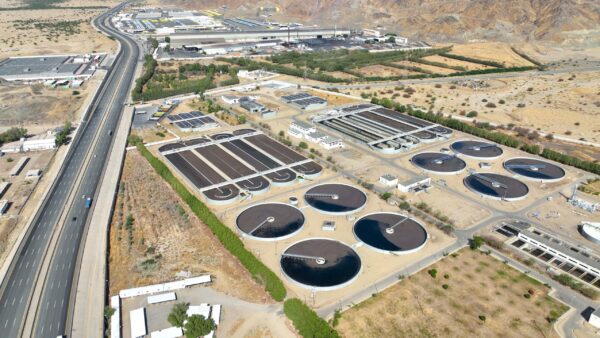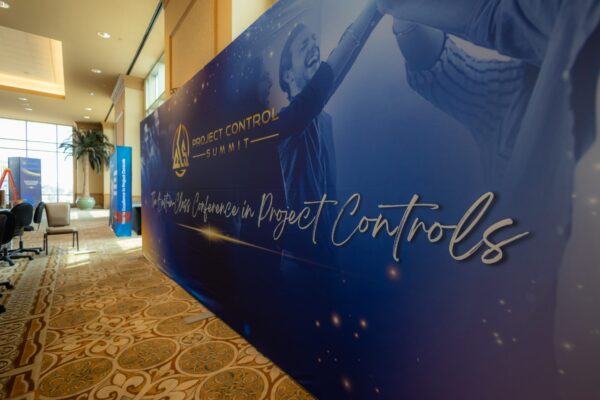

Construction project success can mean many things. Traditionally, project managers (PMs) model and measure project success with “the iron triangle.” According to this model, a project consists of a triangle of constraints: schedule, budget, and scope—change one element in this triangle, and the other factors are impacted. Need to shorten the schedule? Your budget will have to rise. Want to cut costs? The scope may have to be reduced. Because these three constraints are present, interlocking factors on every project, the iron triangle is extremely useful for PMs and owners trying to define project success.
For most clients, meeting a project’s budget, schedule, and scope goals is important to project success. Sometimes, however, an owner’s priority for a project is to optimize one part of the iron triangle. For example, municipalities building K-12 school facilities may have strict schedule requirements to ensure students have desks to sit in come the school year. While adding costs to a resort or class-A high rise building may be secondary concern to scope. Other clients have strict budget requirements. Here, meeting these singular priorities will determine whether a given project is successful.
While scope, budget, and cost are important factors for an owner determining project success, they are not the only factors. With growing awareness of climate change have come demands for more sustainable projects. As social justice movements shake the status quo, owners may ask, “How does my project impact marginalized communities?” For example, most PMs are familiar with Minority Business Enterprise (MBE) requirements, common on government work. MBE requirements are not obstacles to overcome or administrative boxes to be checked. They reflect a client priority to expand economic opportunities for groups of historically disenfranchised people. Other definitions of project success might include community satisfaction, safety performance, teaming performance, or setting an industry benchmark. Simply put, definitions of a project’s success will include whatever priorities an owner wants to see realized through their investment. Stated another way, project success is whatever an owner wants it to be.
The Project Management Role
No matter what success looks like for a client, PMs have an important role to play. PMs can help an owner sharpen their definition of project success, balance alternative and sometimes conflicting priorities, establish KPIs, and drive project success according to an owner’s priorities. For PMs, managing the scope, budget, and cost of an owner’s project will always be important. That responsibility is part of the job description. However, it is equally important for project managers to develop an understanding of all of the goals an owner has and manage those goals in relation to one another—the iron triangle may very well become a rectangle or pentagon.
Ideally, this takes place prior to design, so the owner, PM, and designer can collaborate on a design specific to the owner’s vision. Even so, a PM professional can help an owner refine their goals and the project vehicle for achieving those goals at any point. As project experts, they can help owners organize their priorities and better define them in project terms. PMs can give owners realistic expectations about how a project can achieve their goals. They can keep owners informed about progress as a project moves forward and initiate proactive measures to address risks. The best PMs are also flexible, able to react to changing targets as a project’s purpose changes over the course of its life cycle.
Once PMs help clients define success, they are better able to customize a set of KPIs for their projects. They monitor these metrics over the life of the project, keep owners informed, and use the KPIs to guide all project decision making. This promotes project outcomes better in line with the success the owner envisions.

The Spokane Riverfront U.S. Pavilion: A Case Study in Project Success
In 2020, the Riverfront Park U.S. Pavilion project in Spokane, WA, made headlines in the project architecture, engineering, and construction (AEC) world. Winner of nearly 20 industry awards, the U.S. Pavilion project is an excellent example of a project where the project team helped the owner identify and achieve an “alternative” definition of project success.
The City of Spokane Parks and Recreation Department’s mission for the project was to reestablish the U.S. Pavilion—originally built for the 1974 World’s Fair, “Expo ’74”—as the central gathering place for residents and visitors at the heart of Riverfront Park. They envisioned a year-round visual delight blending passive and active uses to draw visitors to the park. Parks also wanted the Pavilion to accommodate a variety of community-oriented events and performances. In addition, the U.S. Pavilion was envisioned as a lantern at night. Since Parks didn’t necessarily have a specific scope in mind for making all of that happen, they opted to use a progressive design-build delivery method. In progressive design-build projects, a design-builder works closely with the owner and the rest of the project team through an iterative process to develop a project in line with an owner’s ultimate vision.
During the procurement, Parks held one-on-one meetings with respondents to develop an understanding of the goals for the project. In addition to its other priorities, Parks was interested in exceptional teaming performance, and the meetings allowed the Department to gauge how well teams worked together. Parks entrusted the winning team—Hill International, Inc. as project manager, Garco Construction, Inc. as the builder, NAC Architecture and the Berger Partnership as architects, and Jacobs and MW Consulting Engineers as engineers—with developing a concept that would meet all of the client’s goals and with performing well as a team.
Starting with no defined scope, Hill held a partnering session with the project team to formally evaluate goals and concerns for the project. The PM guided the team, including the owner, through development of a project charter that included the project goals, definitions of success, and team member commitments to one another. Periodically, Hill revisited the charter and refreshed commitment to the goals. Together, the team defined and distinguished Parks’ goals for a central gathering place that delighted the community, one that incorporated an illuminated and elevated experience, one that respected the origins of the unique and historic icon, and one that was delivered through exceptional teaming performance. Parks also had goals for the budget and schedule performance of the project. After the Hill team had a full definition of what would make this project a success, the PM professionals were able to create KPIs and monitor project performance in accordance with the client’s ultimate goals.
Through the iterative progressive design-build process, the project team devised a scope in line with Parks’ vision. During design and construction, the PM collaborated and made suggestions to the design-builder and other team members, maintained lines of communication and an atmosphere of partnership, helped ensure continued commitment to the ultimate goals of the project, carefully and accurately monitored project progress towards those goals, and kept the owner abreast of all project conditions.
The Spokane Riverfront Park Pavilion project has received awards from institutions such as: the Associated General Contractors of America (AGC), the Illuminating Engineering Society (IES), the Design-Build Institute of America (DBIA), the National Recreation and Parks Association (NRPA), Building Design & Construction (BD+C), the American Institute of Architects (AIA), Gray Magazine, Engineering News-Record (ENR) Northwest, the Construction Management Association of America (CMAA), the Urban Land Institute (ULI), and the Washington Chapter of the American Society of Landscape Architects (WASLA). It is beloved by its community and visitors to Spokane, and its ambitious goals were achieved through exceptional teamwork. The project was also completed on its revised budget and schedule, with owner-approved changes. This project is a perfect example of one, in which the project manager helped define and achieve “alternative” measures of success, as well as more customary ones.
Positioning the Team for Continued Success
Even though the project management model, combined with a sensitivity to the diversity of owner priorities and goals, helps projects achieve better outcomes, the project management profession is always looking for ways to innovate and improve. In Hill International’s Western Region, we’ve recently created a new position for a professional to oversee and support our PMs and their respective projects’ performance. Among other things, the Manager of Projects (MOP) is envisioned as a person who will directly contribute to our PMs’ ability to define and drive success for our clients.
Assigned to our most high-profile and complex projects, the MOP has two major goals: improving Hill’s operations and improving our clients’ projects performance by meeting if not exceeding their expectations. This person will provide a second set of eyes on Hill’s projects, mentor Hill professionals, and ensure our work adheres to Hill’s processes and culture. Most important, the MOP will work closely with the PMs to formally align our project management practices to the outcomes of our clients’ projects. The MOP will do so by monitoring and conducting a formal review of the projects monthly or quarterly.
The formal project reviews are a critical part of the MOP’s efforts. The reviews will cover budget, changes, payments, safety, quality, resources, schedule, gross margin, project management action items, as well as KPIs and any other topic relevant to the success of a given project or program. The reviews will improve projects by creating formal documentation about client expectations and goals and our means of achieving them, which information can be easily disseminated throughout a project organization or to other professionals working on similar projects. The MOP and other Hill leaders will also be able to offer guidance to project teams based on observations made in the project reviews. In this way our team hopes to achieve better client-goal alignment in our services and drive at even better project results for our clients.
There to Help, No Matter What
While defining project success is ultimately the responsibility of an owner, PMs will always bring something to the table. Project management professionals have an entire toolkit to support projects, and even though that toolkit has been traditionally oriented towards monitoring and improving schedule, budget, and scope outcomes, PMs are ideally positioned for helping owners with “alternative” definitions of success for their projects.
As evidenced by the U.S. Pavilion project, a strong project management team can effectively cultivate a team spirit, help define “alternative” measures of project success, and drive at those “alternative” measures as well as more traditional ones. We also know that, as the world and society continue to change, clients’ priorities will evolve as well. With expanding definitions of project success, PMs will also have to adapt. That’s why, at Hill, we are always looking for new ways to innovate and better understand our clients’ goals, such as with our MOP. No matter what success looks like, PMs will be there to help.
About the Authors
Gregory Heinz is Senior Vice President, Western Region Manager at Hill International, Inc. He has more than 25 years of experience in delivering infrastructure projects to clients in the public and private sectors. Contact Greg at [email protected].
Content Developer Joseph Pooler has worked with Hill since 2019, helping firm experts capture ideas, best practices, and other innovations and translate these achievements into articles, papers, and other content.
Share

June 23, 2025 | Articles
Jeffrey Hurley Joins Hill’s Northern California Rail Practice

June 23, 2025 | Articles
Ready, Set, Grow: First VP Chad Koelling Takes Charge of Hill’s Mountain West Region

June 8, 2025 | Articles
PMO in Saudi Arabia: The Holistic Approach to Realizing a National Mega-Portfolio

June 1, 2025 | Articles

May 26, 2025 | Articles

May 12, 2025 | Articles
Keeping Your Water/Wastewater Programs Flowing with Public Relations

April 27, 2025 | Articles
Oiling the Machine: Steps to Successful Permitting on Infrastructure Megaprojects

April 20, 2025 | Articles
Sustainable Scaling: Solutions for Managing Risk on Europe’s Data Center Projects